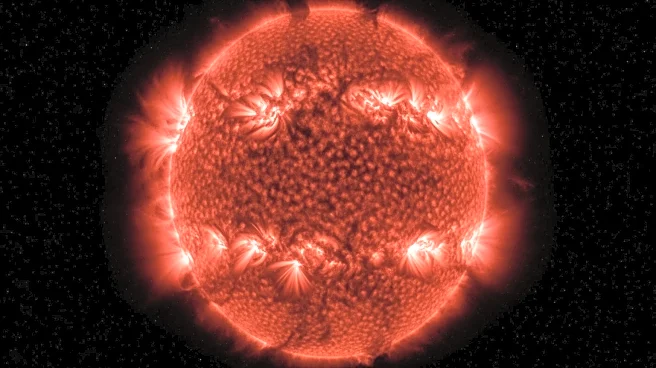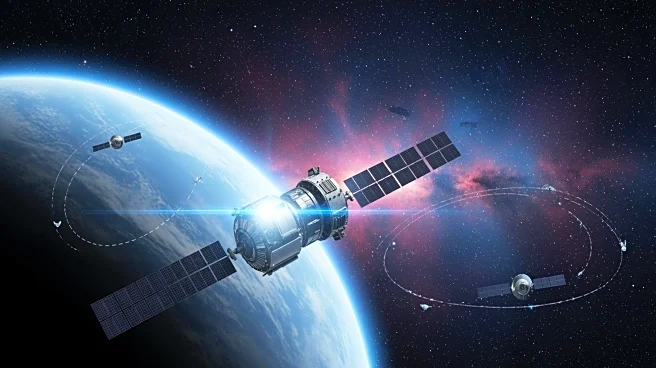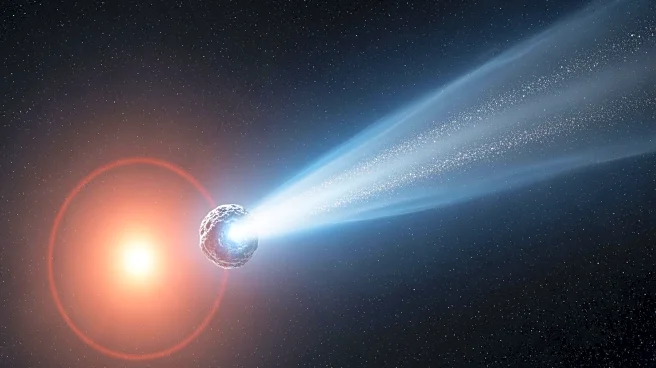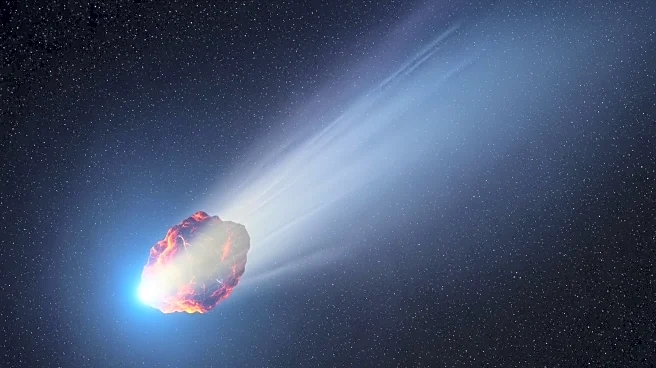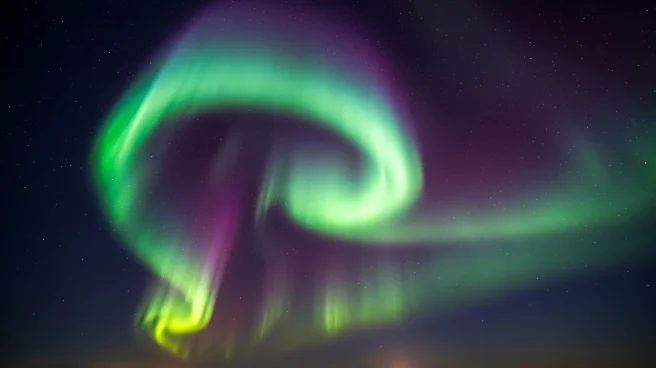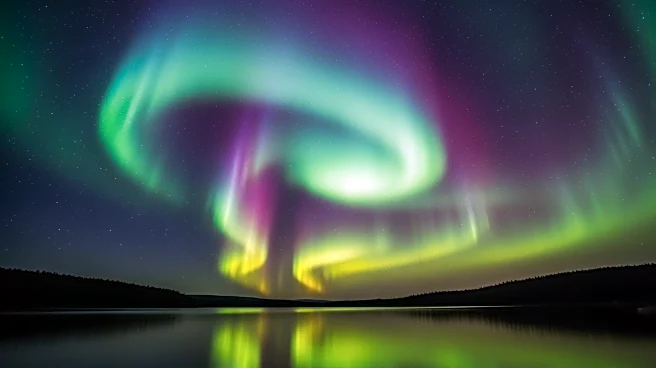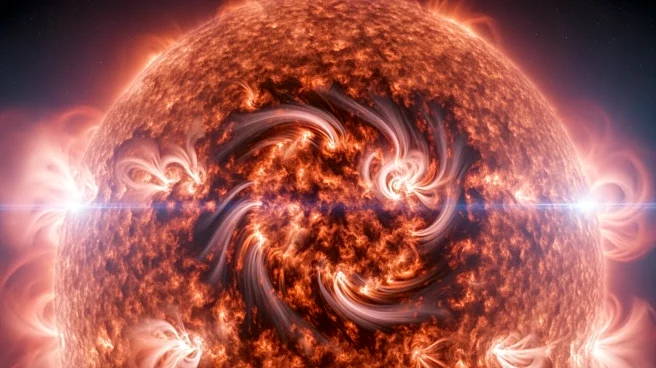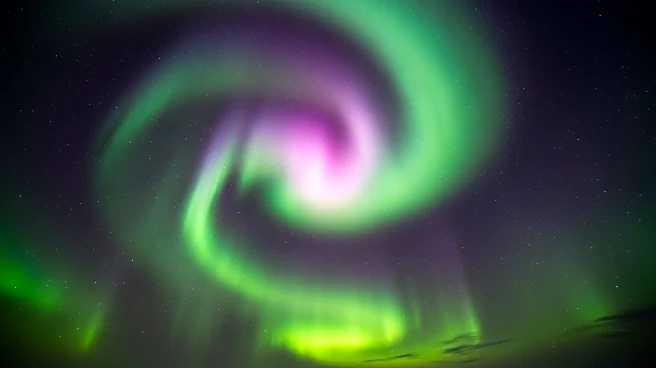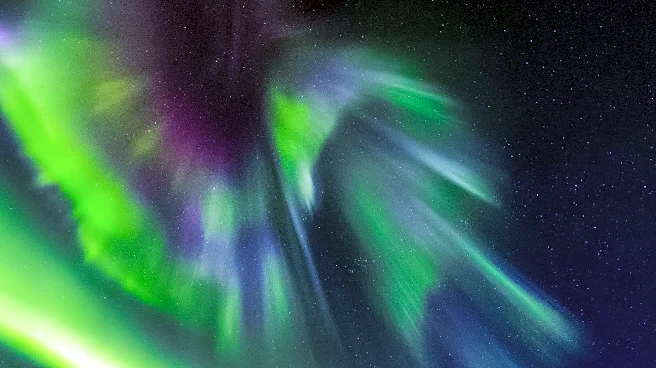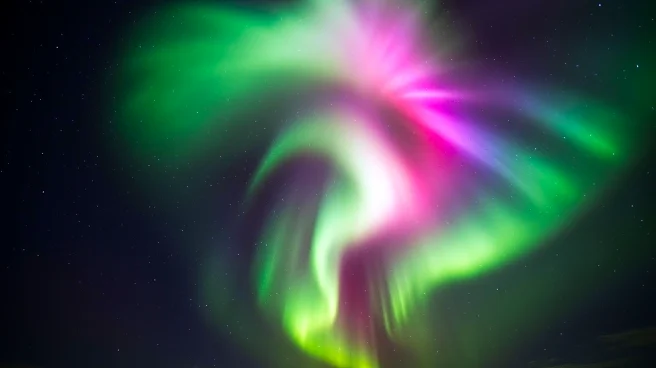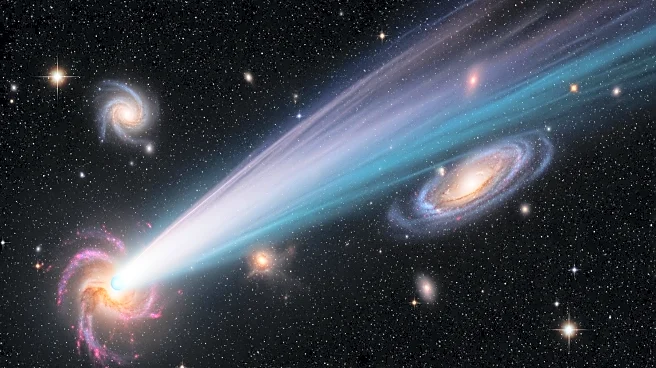What's Happening?
NASA's Solar Dynamics Observatory has captured an image of the sun resembling a jack-o'-lantern, with dark coronal holes and bright active regions forming a face-like pattern. This image, taken on October
28, 2025, coincides with Halloween and highlights a coronal hole on the sun's surface. This hole is releasing a high-speed solar wind stream towards Earth, which could lead to minor to moderate geomagnetic storm conditions from October 28 through October 29. Such storms can cause auroras to appear beyond their usual polar locations, potentially visible in mid-latitudes. The observatory has been monitoring the sun since 2010, providing insights into how solar magnetic energy influences space weather.
Why It's Important?
The potential geomagnetic storms could have significant impacts on Earth, including disruptions to satellite operations and power systems. Historically, similar solar events have caused widespread auroras and technological disruptions, as seen during the Halloween storms of 2003. Understanding and predicting these solar activities are crucial for preparing and mitigating their effects on communication systems, navigation, and power grids. The image serves as a reminder of the sun's influence on space weather and the importance of continuous monitoring to safeguard technological infrastructure.
What's Next?
If geomagnetic storm conditions intensify, auroras may become visible in areas not typically affected, providing a rare opportunity for observation in mid-latitude regions. Scientists and space weather forecasters will continue to monitor the solar wind stream and its effects on Earth's magnetic field. This ongoing observation will help refine predictions and improve preparedness for future solar events. Additionally, the Solar Dynamics Observatory will continue to provide valuable data to enhance understanding of solar phenomena.
Beyond the Headlines
The image of the sun resembling a jack-o'-lantern highlights the intersection of science and cultural events, drawing public interest to solar activity. It underscores the role of space observatories in making complex scientific phenomena accessible and engaging to the public. The event also illustrates the importance of interdisciplinary collaboration in space weather research, combining astronomy, technology, and public communication.
